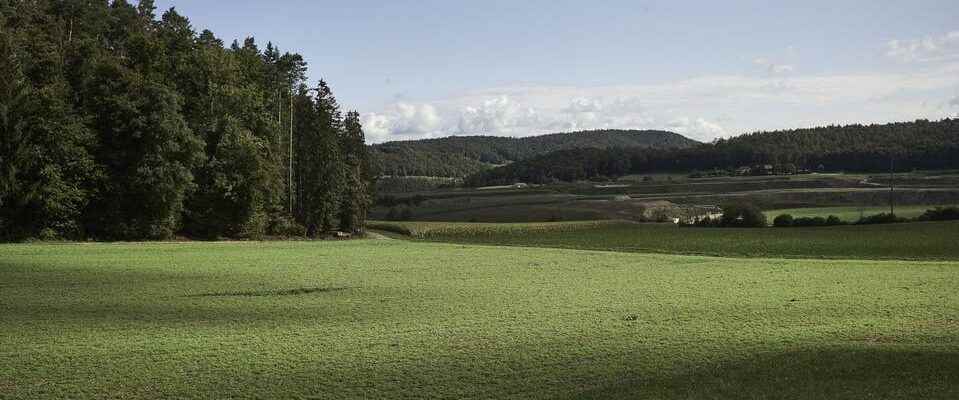Roland Schmid / NZZ
The nuclear waste from all of Switzerland is to be sunk in the north of Zurich. There is hardly any resistance. Why?
After this announcement one should not be surprised about angry protest. Not far from a tranquil village, farmland is to be torn up and a tunnel driven into the interior. A system of caverns is planned at a depth of 900 meters, hundreds of kilometers long – not dissimilar to an insect den. Radioactive material is to be stored in it. For periods of time that cannot be surveyed according to human judgement.
On Saturday, Nagra decided where the radioactive waste from all over Switzerland should be stored: in the Zurich Unterland. This comes as a shock to the affected landowners. But apart from them, it’s quiet. How can that be?
The village of Weiach is barely three kilometers from the planned nuclear repository. It is Sunday, one day after the location decision was made public. As luck would have it, the place is celebrating its 750th anniversary – with a beer table, torch skewers, pork sausage and lots of visitors. The main attraction has been entrusted to a tool manufacturer. Sports lumberjacks compete against each other.
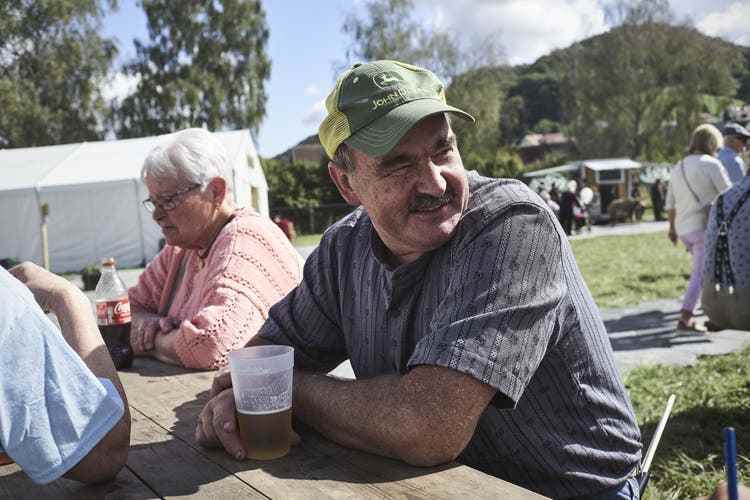
At the celebration of 750 years of Weiach: Andreas Gander works in the Weiach gravel pit and sees the nuclear dump as unproblematic.
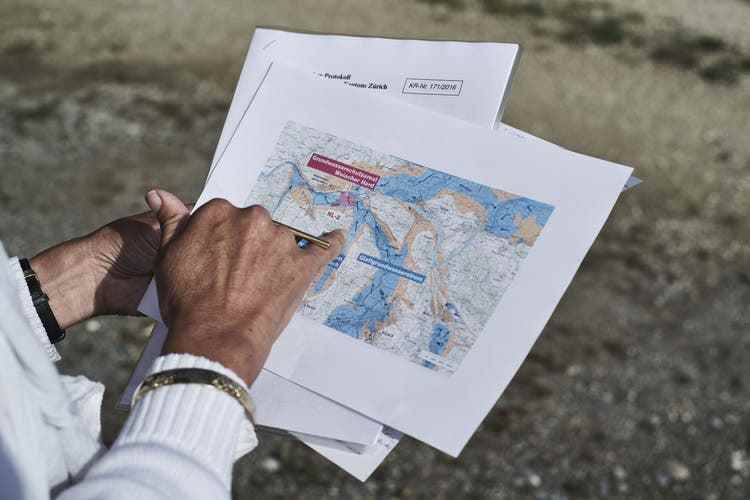
Cantonal Councilor Wilma Willi shows a map with groundwater flows: There are still open questions about groundwater, says the Green Party.
On the Weiacher festival grounds, the tenor is unanimous: the experts will know what they are doing. The material is stored deep underground. And it will still be decades before that happens. “Someone has to eat it,” says Andreas Schenkel, a farmer from Weiach – nuclear waste cannot simply be deported abroad. All interlocutors share this opinion unanimously.
The Zürcher Unterland – these are pretty villages to look at. Timber houses dominate the picture. But the Unterland also has another face. Literally every minute, jets fly over the roofs on their approach to land. Roads and railways cut through the land, gravel is being dug out of the ground. A family man from Windlach thinks it makes sense that the nuclear waste should now also be stored here. He says it without any sarcasm.
Organic farming and nuclear waste disposal sites don’t get along very well
Not everyone leaves the decision cold. In Haberstal we meet Mirjam Strässle. This is the field name of the planned location; “Nordlich Lägern” is what geologists call it. There isn’t much to see here. The field surrounded by forest lies fallow.
Mirjam Strässle’s family has been farming in the area for generations. In the Haberstal, she may have to give up a piece of forest when the facility is built. But that’s not their biggest problem. She relies on organic farming and her farm is less than three hundred meters away. The farming family keeps suckler cows and farms, growing wheat, sunflowers, pumpkins and oats, among other things.
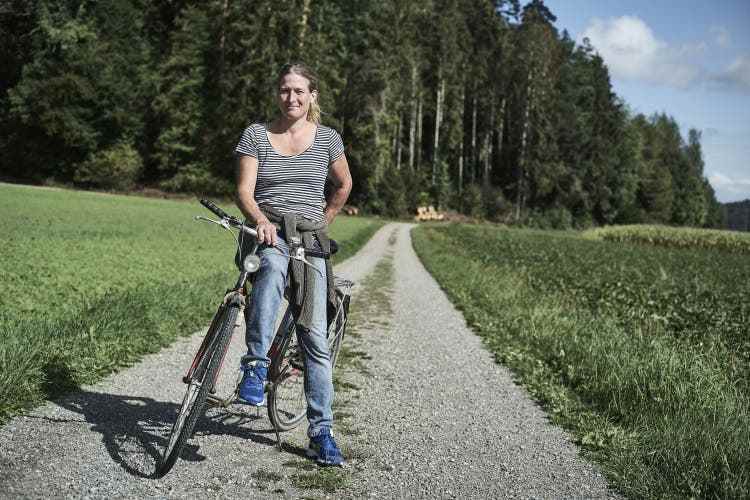
The farm of the organic farmer Mirjam Strässle is in the immediate vicinity of the landfill.
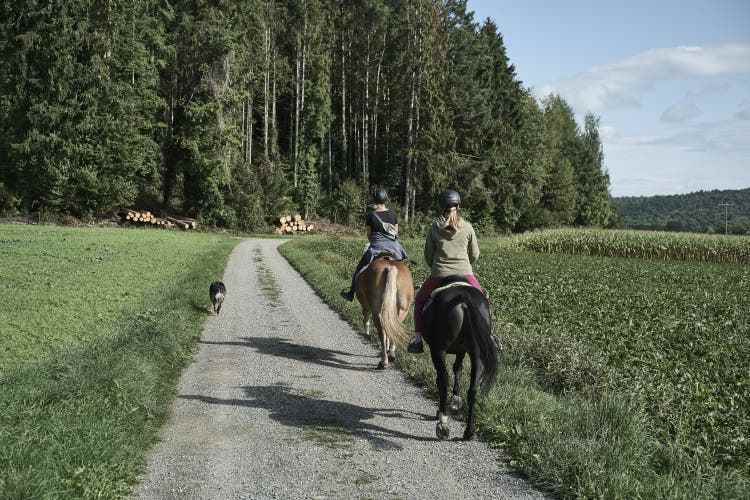
The Haberstal has been chosen as the site of the planned Nagra repository for low-, intermediate- and high-level radioactive waste.
Organic farming can hardly be reconciled with a nuclear repository.
The decision is a turning point for the family of six. It will take a decade before construction can begin, but construction will take two decades. For the Strässle family, this means: first the uncertainty, then the emissions. Mirjam Strässle can still hear the hum of the test drilling day and night.
And when it’s all completed, their farm will be on top of a nuclear repository.
Mirjam Strässle doesn’t quite know what to think of the assurances of the experts that the location is safe. This is difficult for laypersons to assess. “There’s no trust,” she says. The information from the weekend was unfortunate. It was always said that the landowners would be informed first. But when Mirjam Strässle was still sitting in the informational meeting with Nagra representatives on Saturday, the choice of location was officially confirmed.
The green cantonal councilor Wilma Willi is committed to clarifying the open questions about the location. She tells of an acquaintance who “just cried” after the decision. But for most it has actually been the same so far. Or they hoped for financial benefits for the communities around the location – and lower taxes as a result. Willi says that even the farmers demonstrated in Marthalen. In Stadel it is different.
Firmly in bourgeois hands
Even the mayor of Stadel cannot tell you why this is so. Dieter Schaltegger (SVP) confirms that the level of interest is rather low compared to the other locations. “Those who are interested have relatively high levels of trust in the experts.” The political orientation of the villages in the surrounding area should be important. It is firmly in the hands of the bourgeoisie, with the SVP as the dominant party.
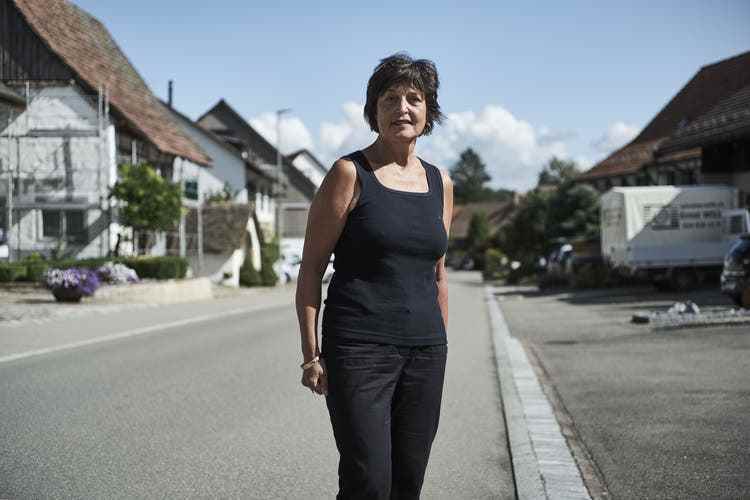
Wilma Willi, cantonal councilor of the Greens, says she is “critical” of the search for a location.
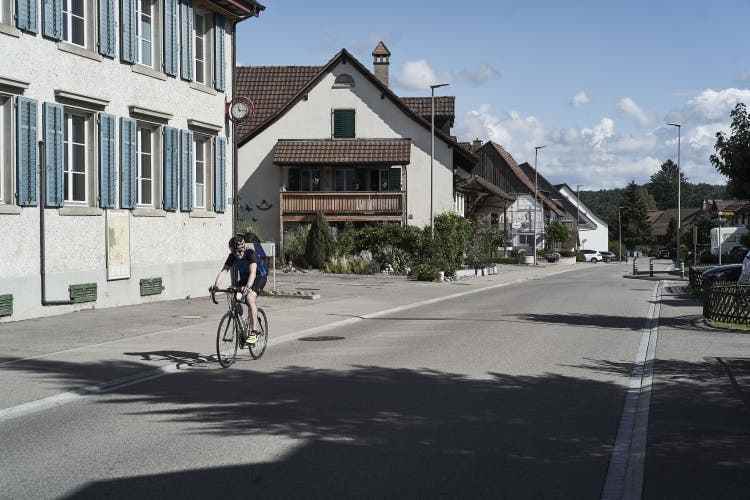
The village of Stadel is not far from the landfill.
Wilma Willi says one can ask oneself whether Nagra has taken the path of least resistance. Nagra always denies such connections. They would be highly explosive because one could draw the conclusion that the geologically best location was not chosen. The Stadler mayor Schaltegger says: “Nagra has always convincingly explained to us that only geological aspects play a role.”
Willi says she is not fundamentally opposed to a deep repository. Switzerland must assume this responsibility. And in terms of safety, it ultimately doesn’t matter that much whether the nuclear waste is buried here or in the wine country. “If there is a problem with radioactivity, everyone has a problem, whether in Stadel, Marthalen or in the city of Zurich.”
However, Willi demands more transparency from Nagra. In the cantonal council, she requested an examination by independent experts. He was accepted. You have to take a close look at the groundwater problem, she says. A groundwater stream, which feeds the most important water reserves in the canton, flows right past the area. Willi also sees a lack of transparency in the compensation issue. It has not been clarified for either the landowners or the communities.
In fact, the financial point is open. The Federal Council has spoken of generous compensation and given the figure of 800 million francs. But nothing is guaranteed in writing, says Stadler Mayor Schaltegger. Negotiations on the compensation payments for the infrastructure communities are just beginning. “But we are confident that the communities will be compensated.”
So we still have to talk about the money. Apart from that, the region is taking on the thankless task for the nation. Almost without grumbling.
